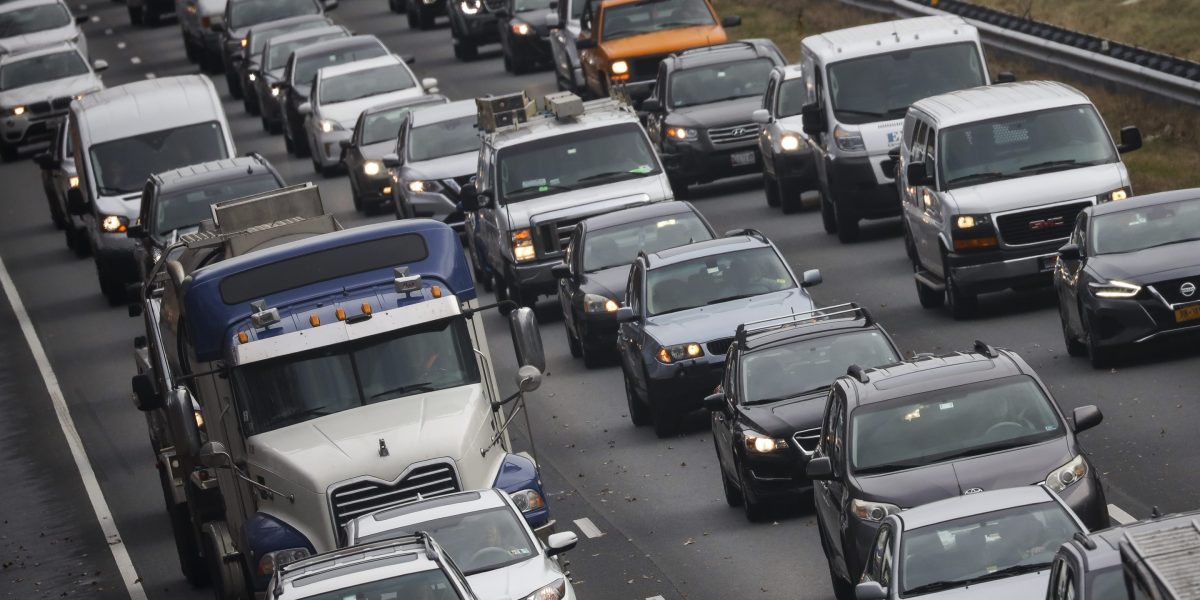In
2018, an estimated 40,000 Americans died in traffic accidents. Sadly,
an estimated 94% of these accidents are due to human error, according to a 2015 study
by the National Highway Traffic Safety Administration (NHTSA).
Thankfully,
an innovation that could significantly reduce the number of traffic deaths
isn’t too far down the road.
Connected
vehicles—vehicles with on-board sensors and advanced software that communicates
with drivers, other vehicles, road infrastructure, and the cloud—have the
potential to not only dramatically improve traffic safety, but also reduce
congestion on our roads.
This
technology should become increasingly common in the coming years. According to
research firm IHS Markit, 72.5 million connected
cars
will be sold globally in 2023 (24 million were sold in 2015), which would make
up almost 70% of all passenger vehicle sales.
That’s
great news. And once the federal government provides certainty there will be
adequate radio spectrum for connected vehicles, the technology will have the
chance to fully excel.
Tech
and automobile companies, as well as some states, are already making major
strides with V2X technology. My company, Panasonic, is deeply invested: Through
partnerships with the Colorado, Utah, and Georgia transportation departments,
we’re already operating an advanced transportation data network and cloud
platform.
Connected
vehicles work by collecting information from their surroundings and
communicating it to each other, as well as intelligent transportation
infrastructure that uses sensors installed alongside roads, on utility poles,
on large gantries along highways, and on poles dedicated for traffic cameras or
lights. This vehicle-to-everything, or “V2X,” communication, as it’s called,
delivers practical information to drivers and workers coordinating road
traffic.
Widespread
V2X deployment will have a major impact on road safety. According to the NHTSA, connected cars could
prevent up to 80% of multi-vehicle crashes involving unimpaired drivers.
Connected
vehicles are able to send and receive immediate warnings or guidance based on
road conditions. For instance, a connected vehicle could send data to roadside
sensors when it rapidly changes speed, which would then communicate to traffic
operators that an abnormal situation might be occurring. Operators could then
dispatch emergency personnel if necessary, depending on data shared by other
vehicles in the vicinity.
As
connected cars spread across the driving fleet, machine-learning platforms can develop
models from the data over time and begin predicting conditions and incidents.
Such platforms, managed by traffic administration agencies, could suggest
improvements to road infrastructure at points on the road that can be
particularly hazardous, such as sudden sharp turns on rural freeways or slick
pavement due to poor weather.
Connected
vehicle technology can address traffic congestion too. In addition to costing
the U.S. economy an estimated $87 billion in 2018, per INRIX data, congestion
also reduces the productivity of workers idling in traffic, adds costs and
length of time for transporting goods, and increases air pollution.
Sharing
real-time traffic data can prevent jams before they impede traffic flow. The
state of Utah has built one of the first operational connected-vehicle
corridors in the U.S. in Salt Lake City and Provo. Its buses are equipped with
radios that “talk” to traffic signals. If the bus is running behind schedule,
the signal can extend the length of the green light without any action taken by
the bus driver.
Some states have already begun
deploying connected car technology in
roadway infrastructure. In addition to the aforementioned Utah program, states like Colorado, New York, and
Wyoming,and many others,
are using connected vehicle technology to gather and send vital safety
information directly to roadway infrastructure users.
Auto manufacturers are also embracing
this innovation. Ford, for example, announced earlier this year that all 2022 models in the U.S. will be equipped with an advanced V2X system. Cadillac is working to enable its cars with V2X capabilities by 2023. And most
of Volkswagen’s 2020 European models will be equipped with
V2X.
But in order to expand connected
vehicles nationwide, the federal government needs to create certainty in the
market. The Federal Communications Commission (FCC) recently proposed changes
that would allow part of the radio spectrum allocated for transportation safety
to be used for communications unrelated to transportation. The FCC’s proposed
plan would allow harmful interference from adjacent Wi-Fi bands, similar to
having a noisy neighbor move in next door. This interference would threaten to
disable the benefits of deploying V2X’s lifesaving technology, and could impel
some vehicle manufacturers that had previously committed to deploying V2X
technology on the radio spectrum to pull back.
To provide certainty that connected
cars can directly share data between vehicles to improve safety, the FCC should
continue to work with the U.S. Transportation Department to ensure enough
interference-free spectrum is available for transportation safety.
Improving regulations around V2X will
help the technology mature faster. By combining smart government efforts like
this with private innovation, connected vehicles will soon be making all of our
lives safer and more convenient.
Michael Moskowitz is chairman and CEO of Panasonic Corporation of North America.
More opinion in Fortune:
—Coronavirus shows why we need vaccines before, not after, an outbreak
—How Democrats’ impeachment campaign helped Trump
—Being a CEO is more tenuous than ever. How I survived 30 years at Aflac
—How Warren Buffett built Berkshire Hathaway
—Are the Houston Astros irredeemable cheaters? Or are they all of us?
Listen to our audio briefing, Fortune 500 Daily






